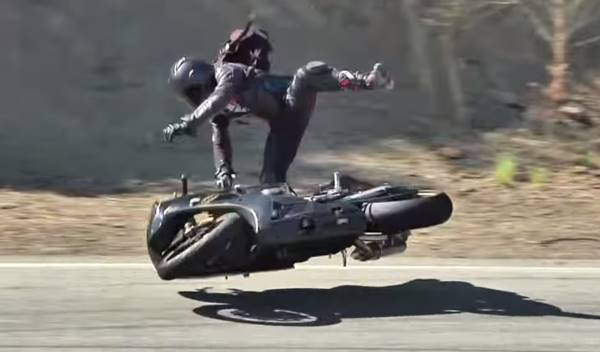
Accident and crash are two loaded words. A discussion frequently occurs about whether an accident is really an accident – aren’t they just all ‘crashes’, and all preventable? It is a discussion that can be confusing if you let the semantics of the words take over, and there are grey areas.
The answer is that an accident can result in a crash if the vehicle hits something, which won’t always be the case. For example, you could slide off the road and cause no damage to yourself or your vehicle, so it’s definitely not a crash in that case. Almost all are preventable (this is the important fact), but the word accident describes the intention of the driver at the time. An accident could result in injury, death and damage, but it’s whether the person intended that injury, death or damage to happen that influences how we should perceive this.
Let’s ditch the semantics and look at it realistically:
- If you deliberately drive your vehicle into something else, you have had/caused a crash. You have not caused an accident because there was nothing ‘accidental’ about it.
- If you were driving along and you lost control of your vehicle and hit something or someone, and you didn’t intend to do that, that is an accident. The result of the accident was a crash, but it’s still an accident. This is the point that some road safety campaigners are using to imply that everything is deliberate when you are on the road.
Everything we do in life carries a certain amount of risk. Getting in (or on) your vehicle and using it on a road increases your risk of having an accident. To avoid having a vehicle accident completely, you must stop using your vehicle completely.
The grey area is when you knowingly do something that elevates your risk, even though you might not have the intention of having a ‘crash’. Using your cellphone while in control of the vehicle increases your risk dramatically, and you might have a crash, the crash wasn’t the intentional part; your elevation and acceptance of the risk was the intentional part. So, can you really call it an ‘accident.’ It’s difficult to say.
Can you prevent crashes, collisions and accidents?
There are three types of collisions or crashes: preventable crashes, preventable accidents and non-preventable accidents.
Preventable crashes
These make up a large proportion of all ‘accidents’, and occur usually because a driver doesn’t follow the road rules. The following are examples of causes of preventable accidents:
- Too much speed
- Driving deliberately distracted (e.g. using your mobile phone, eating, shaving, putting on make-up, etc)
- Tailgating
- Driving a mechanically defective vehicle (bald tyres, worn shock absorbers and ineffective brakes)
- Running a red light
- Driving drunk or under the influence of drugs/medication/illness
- Driving unlicenced with no experience
In all of the above cases the driver almost certainly the cause of the accident. It is the driver’s responsibility when you are driving to drive according to the conditions of the road. For example you should be able to stop in the clear distance of road ahead of you on a laned road, or half the distance ahead of you on an unlaned road; you should use the two-second rule when following another vehicle, etc.
This video shows a good example of a preventable accident. The motorbike rider gives too much throttle on the exit of the turn and ends up in a highside crash. The biker is clearly driving too fast for the type of road, and is on this road (Mulholland Drive) specifically for the thrills of pushing the bike to the limit.
Preventable accidents
These are where a lack of skill or a temporary event creates an unintentional consequence.
- Driving inadvertently distracted
- Misjudging a manoeuvre (e.g. reversing into a pole, misjudging a corner or the road surface’s grip)
- Someone else hits you (you saw them coming but didn’t react quickly enough)
- You were obeying the road rules but didn’t react quickly enough
Taking an advanced driving course or lessons with an approved driving instructor will help reduce the likelihood of a preventable accident.
Non-preventable accidents
This is a very small proportion of accidents, such as:
- Tyre blow-out (here’s what to do if it happens to the front and rear tyres).
- Another driver hits you (you didn’t see them coming, or had nowhere to go, e.g. you’re in a queue and someone runs into the back of you)
- Dog or child runs out in front of you leaving too little time to react
- Sudden mechanical failure (e.g. bonnet catch fails and the bonnet flies up, blocking your view; or brake failure)
- Rock slide takes you off the road as you are driving
- You have a sudden medical event (e.g. heart attack) and can’t control the vehicle.
In the case of all of the above (except maybe the rock slide), they are able to be somewhat mitigated and an experienced driver might be able to avoid having an accident completely due to reaction times, vehicle control skills and superior anticipation.
So, when someone says to you that a crash is not an accident, you can tell them it can be, because it depends on the intent and the circumstances. The
If you want to see some video examples of people who didn’t intend to crash but elevated their risk of having a crash, check out our article on highside and lowside motorbike accidents.
This article is intended to put some kind of stake in the ground and open a discussion. You might have a different opinion about what constitutes and accident and crash and, as mentioned above, there are large grey areas. Even by defining them here we are subjecting ourselves to semantics, interpretation and judgement that is less than clear in some circumstances.

